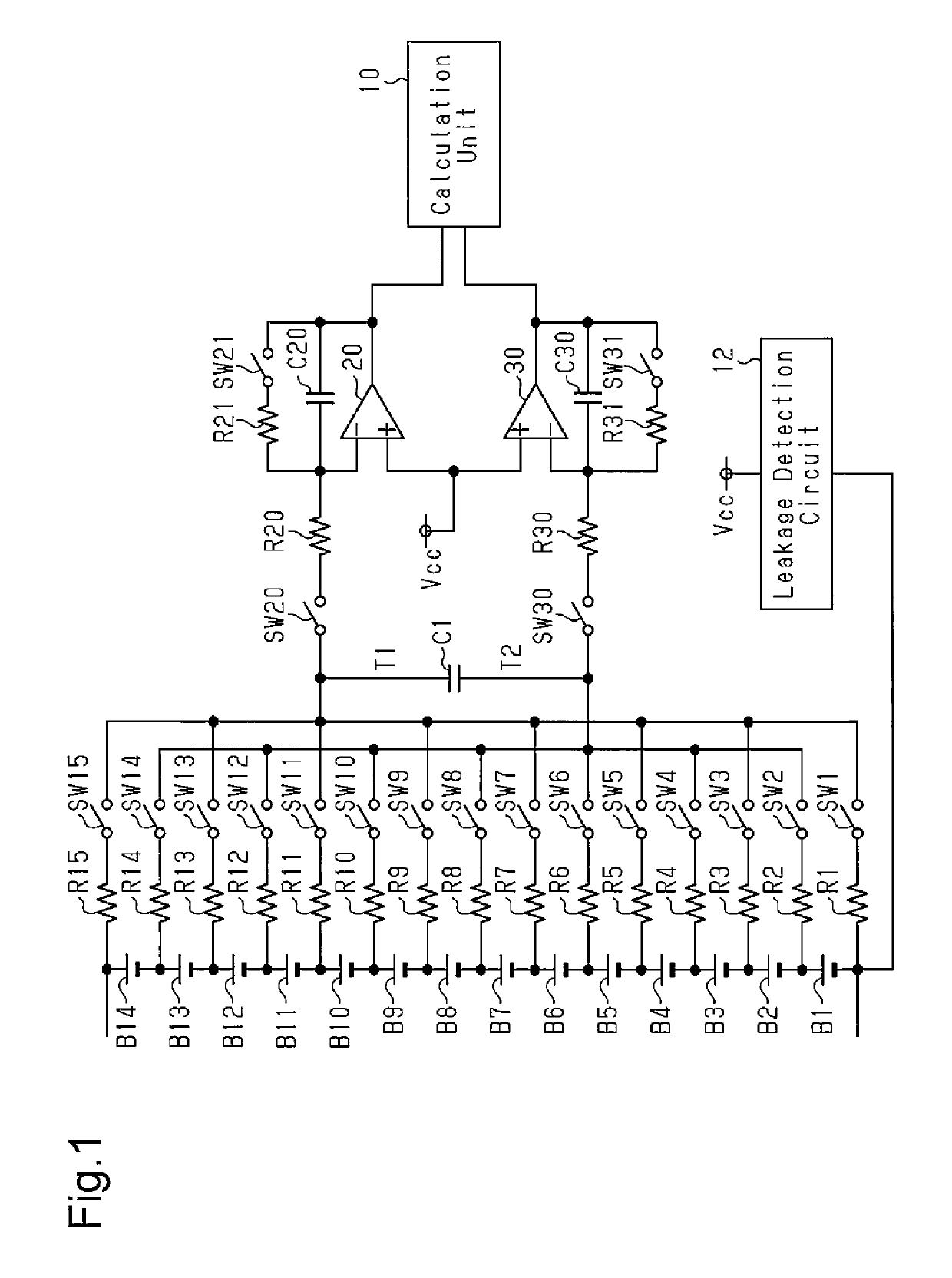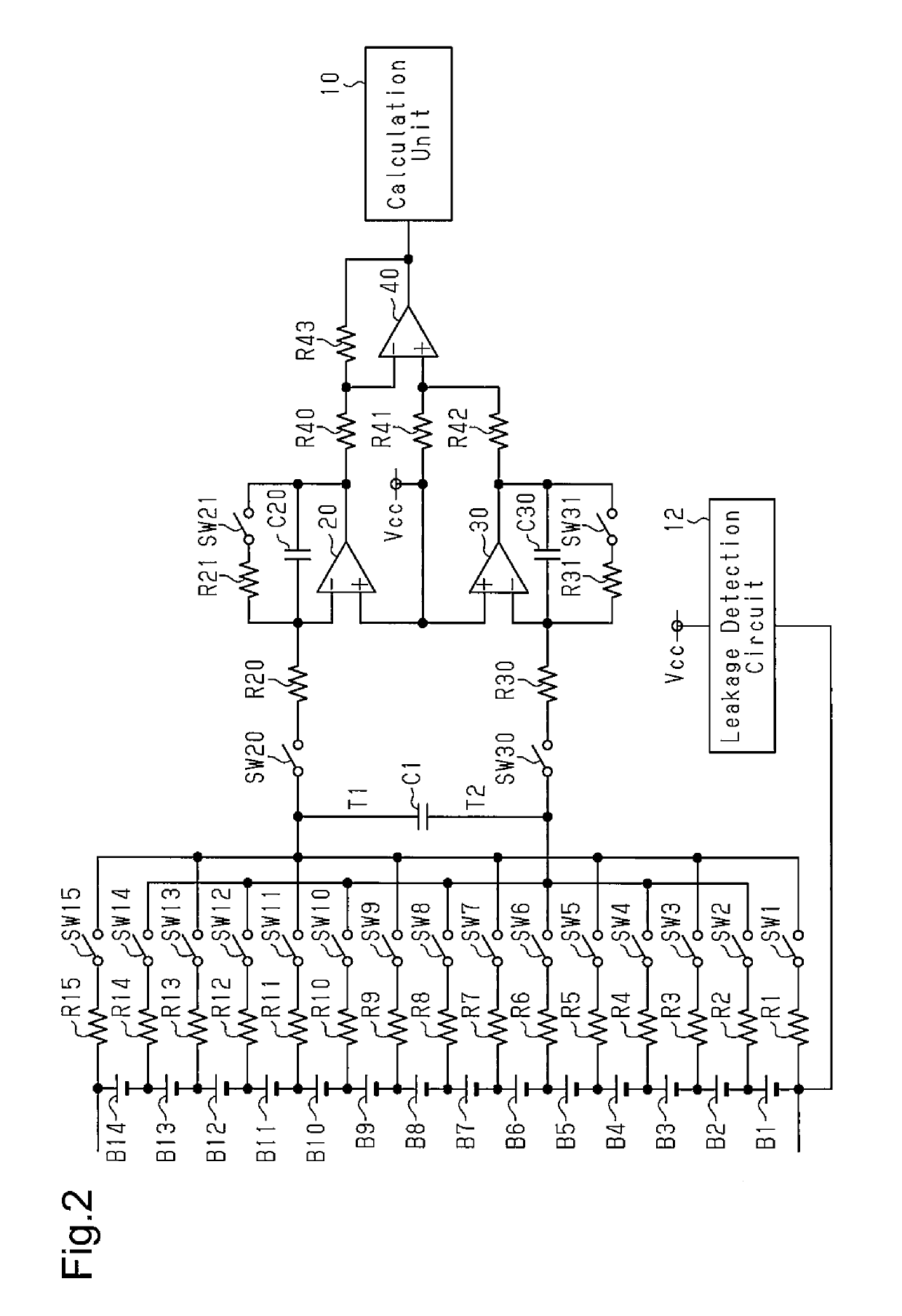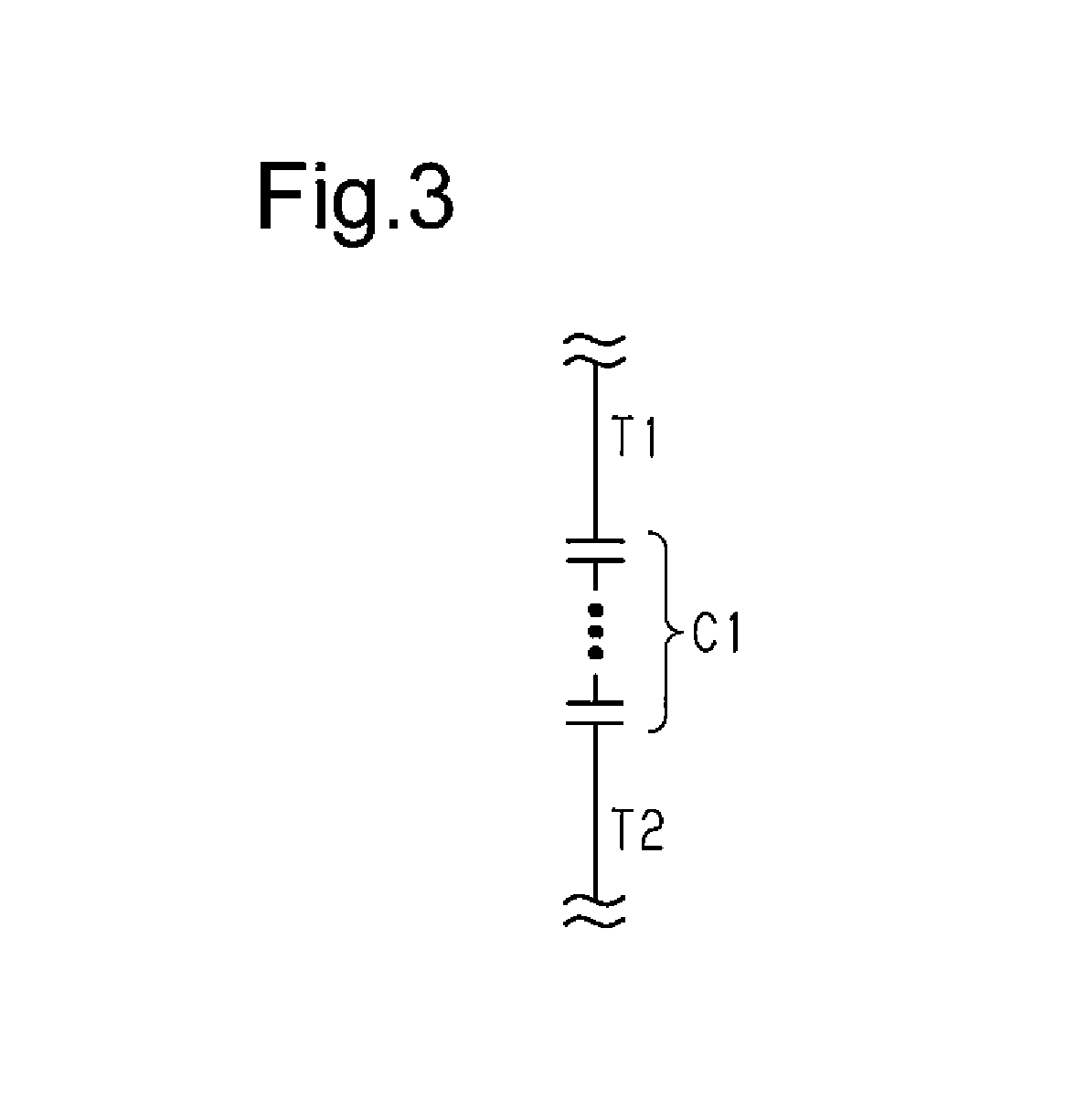Battery voltage measurement circuit
a voltage measurement and battery technology, applied in the field of battery voltage measurement circuits, can solve the problems of inability to accurately measure voltage, inability to accurately and quickly charge flying capacitors, and occurrence of leak current, however small, and achieve the effect of simplifying the calculation process and accurately and quickly measuring voltag
- Summary
- Abstract
- Description
- Claims
- Application Information
AI Technical Summary
Benefits of technology
Problems solved by technology
Method used
Image
Examples
Embodiment Construction
[0024]A first embodiment of a battery voltage measurement circuit will now be described with reference to FIG. 1. The battery voltage measurement circuit includes a flying capacitor voltage detection circuit and measures battery voltages at rechargeable batteries. Each rechargeable battery may be a single battery or a battery module in which a group of single batteries are connected in series. In the illustrated example, the rechargeable batteries are battery modules B1 to B14 that are connected in series to form an assembled battery. The assembled battery is installed in, for example, a vehicle such as an electric vehicle or a hybrid vehicle. Each rechargeable battery is a nickel-metal hydride rechargeable battery.
[0025]As shown in FIG. 1, a negative electrode of the assembled battery is a negative terminal of the battery module B1, and a positive electrode of the assembled battery is a positive terminal of the battery module B14. The battery modules B1 to B14 are connected to a vo...
PUM
| Property | Measurement | Unit |
|---|---|---|
| battery voltage | aaaaa | aaaaa |
| voltage | aaaaa | aaaaa |
| state of charge | aaaaa | aaaaa |
Abstract
Description
Claims
Application Information
 Login to View More
Login to View More - R&D
- Intellectual Property
- Life Sciences
- Materials
- Tech Scout
- Unparalleled Data Quality
- Higher Quality Content
- 60% Fewer Hallucinations
Browse by: Latest US Patents, China's latest patents, Technical Efficacy Thesaurus, Application Domain, Technology Topic, Popular Technical Reports.
© 2025 PatSnap. All rights reserved.Legal|Privacy policy|Modern Slavery Act Transparency Statement|Sitemap|About US| Contact US: help@patsnap.com



